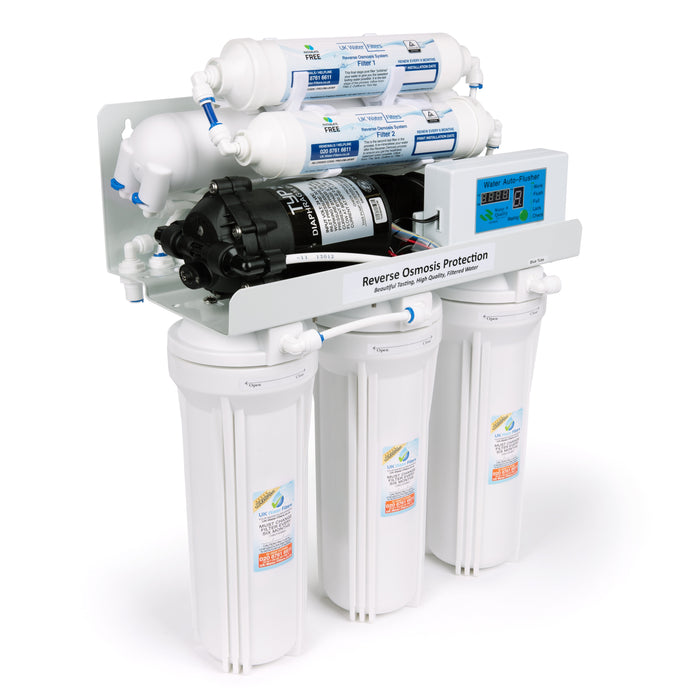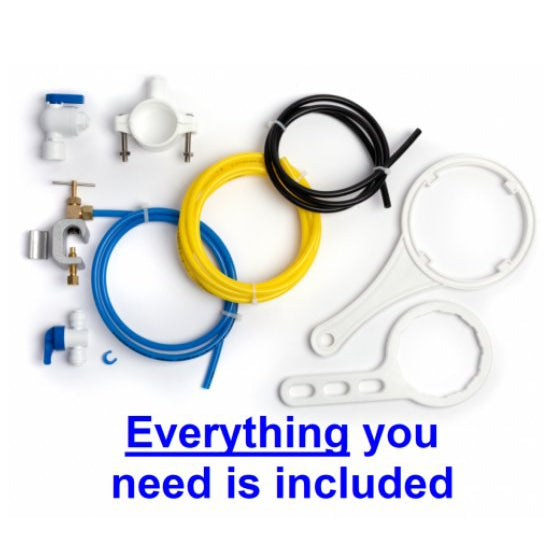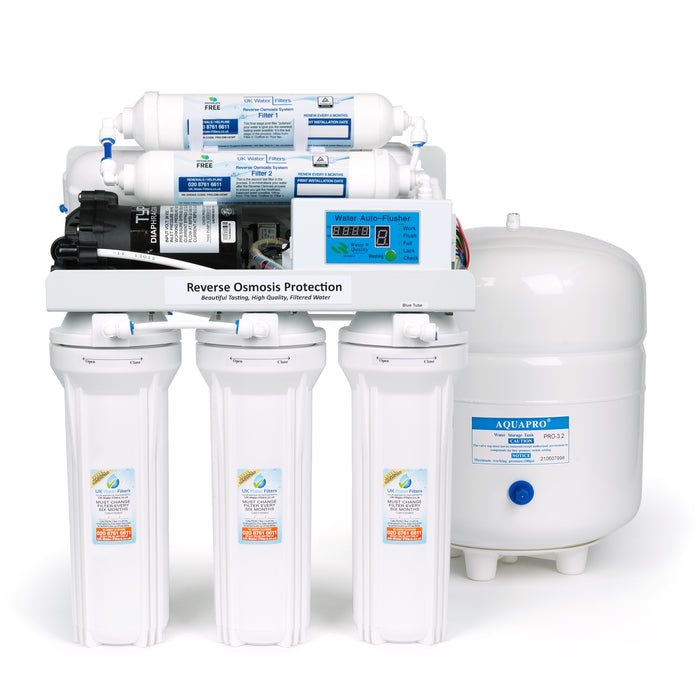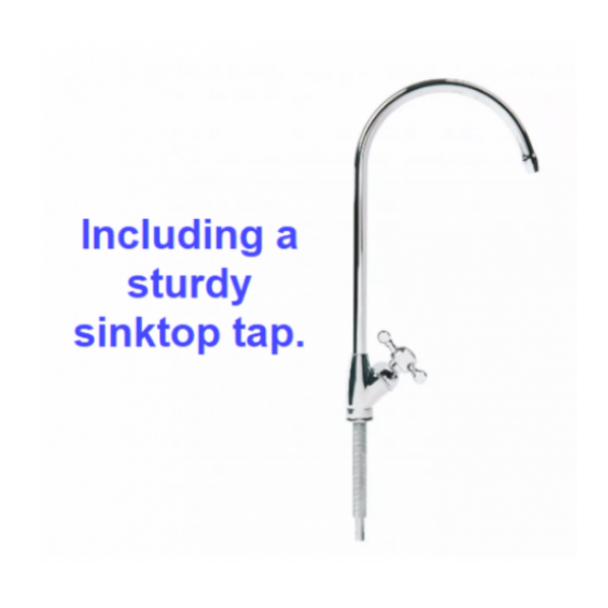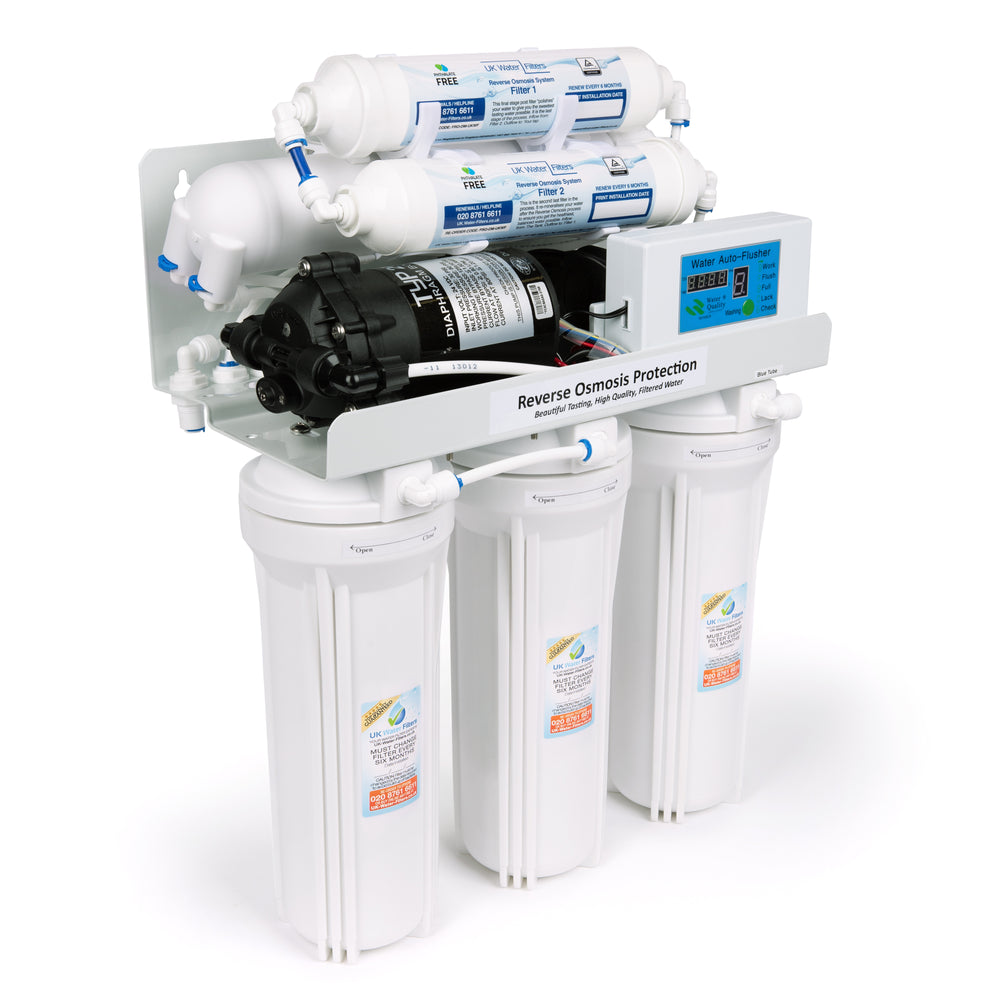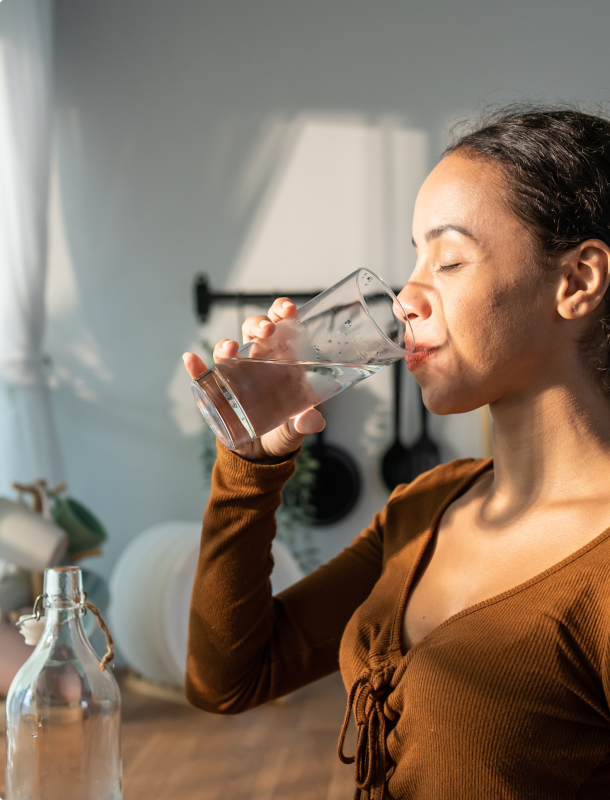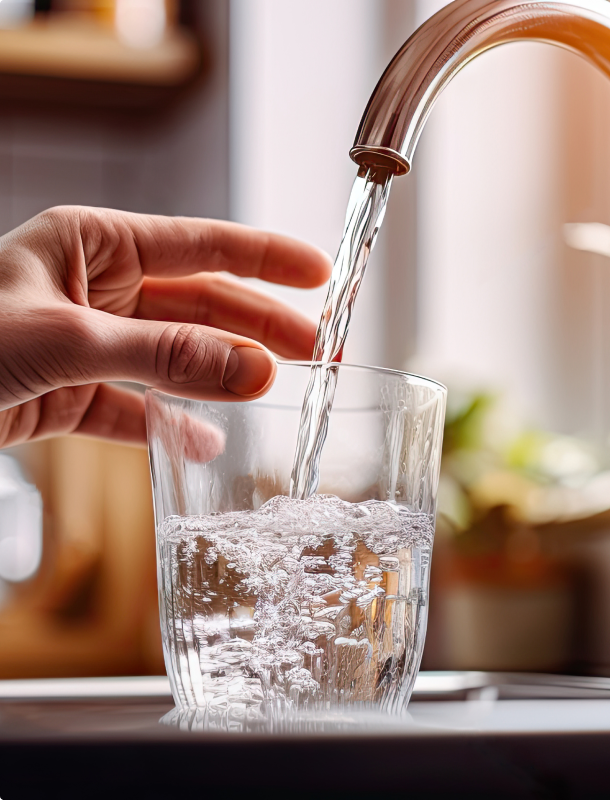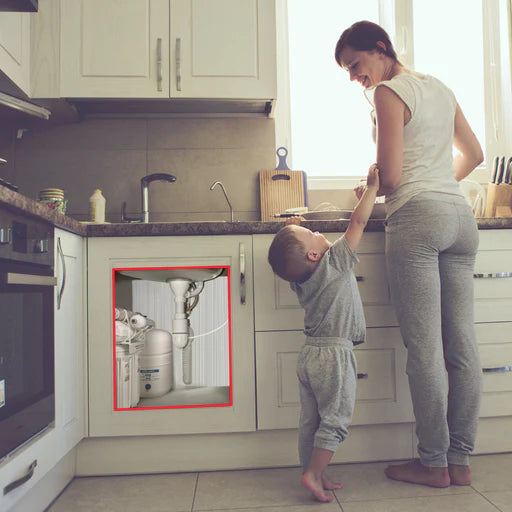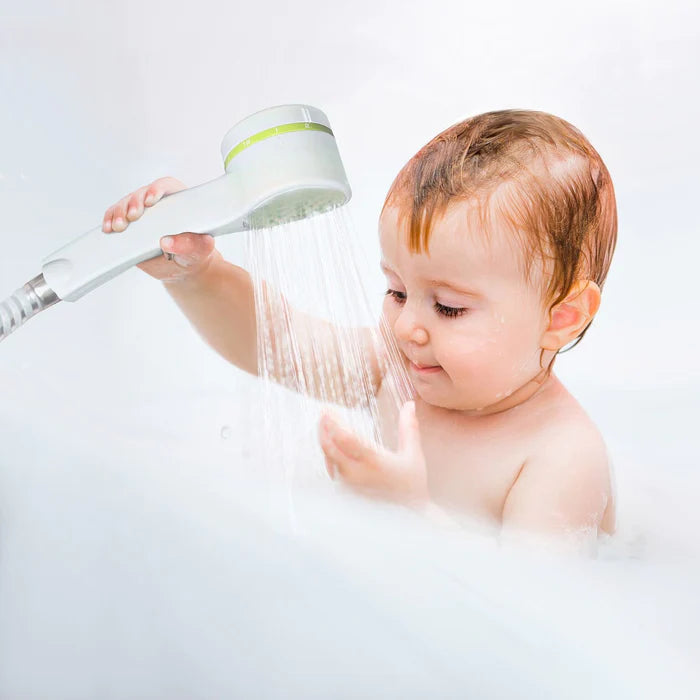Basic Summary
Everything you need to install the system is supplied
Easy to install no plumber should be required
Full instructions included
Free Technical advice to assist with any problems
Capacity / Production Rate - Gallons Per Day (GPD) 50 Gals
Feed temp (Degrees C) 4 to 29
Dimensions
 RO unit: 49.5cm Height x 37.2cm wide x 19.5cm deep
RO unit: 49.5cm Height x 37.2cm wide x 19.5cm deep
Storage vessel is 40cm High x 27cm wide
The 12 Litre Tank / Storage Vessel (Freestanding, connected to RO unit by tube, can be placed several yards away - simply ask us for some extra tubing).
The unit should be fed by a water supply that is potable i.e. drinkable.
Please note that Reverse Osmosis is a complex process requiring reliable equipment performing under high pressure. Always know where your water main stopcock is located in the unlikely event of leaks.
The filter system doesn't have to be at a level below the tap and neither does the tank as long as it's not a gravity fed system.
Back to Technical Contents
How Much Water Does it Produce?
This model will produce 50 GPD ie its "production rate" is 50 gallons per day.
(This assumes perfect conditions ie clean water at the right temperature and that incoming pressure is good).
But when considering how much water is produced by any Reverse Osmosis filter, the most important factor is the size of your RO tank.
This is because your system feeds the tank then stops when it's full.
Here's how it works: When you draw water from your RO you are taking water from the tank. As the tank empties the system refills it at the "production rate" (ie 50 GPD) up to the tank's capacity.
Now, in addition to this, you have to consider that the tank's size is based on the actual physical dimension and not the amount of water it contains.
You have to also take into account the internal bladder that holds the water inside of the tank.
For example, the bladder inside this unit's nominal 12 litre tank will actually hold between 5 to 9 litres of water. If you draw all the water out of the tank it will take anywhere from half an hour to 4 hours to fill up again - depending on incoming water pressure.
Therefore the amount of water this size produces is 5 to 9 litres per average of 2 hours - on a stop/start basis. (Note that you only have to wait for more water if you fully drain the tank in one go. In our experience this happens very rarely with normal domestic usage).
Other typical tank sizes and the actual water they hold are:
18L nominal tank size: Holds 12 to 15 Litres
40L nominal tank size: Holds 23 to 28 Litres
For High Flow / High Capacity Reverse Osmosis systems click here
Back to Technical Contents
How To Check Your Water Pressure
The simplest way to check your water pressure is to turn your cold water tap in the kitchen on full. Stand a few feet away. If you are being splashed with at least a few droplets then your pressure should be high enough.
If this is not happening, your local water supplier should be able to tell you what your water pressure is and whether it is likely to drop below 40 psi at any time.
Back to Technical Contents
Hot Water / Temperatures
The Unit Must NOT BE FROZEN.
The Unit is NOT designed to filter HOT water. It should only filter water at ambient temperature. (Feed temp = 4 to 29 degrees C).
However please note that our Reverse Osmosis units are often used to supply filtered water to hot/boiling water taps and other systems where the temperature is changed. That is fine. But the system itself should not filter hot water.
Back to Technical Contents
What are the Materials Inside the Reverse Osmosis Tanks?
Some people are concerned about the materials the RO tanks are made from and how it might impact their purified water.
This is understandable:
Who wants to filter their water carefully only for it to be somehow polluted in the storage vessel while waiting to be used!
(Just to be clear: RO filtration is a highly effective but slow process. Rather than you waiting for the filter to produce enough water for you, the system purifies the water slowly and fills up the storage vessel / tank. When you turn on the RO drinking tap there's several litres of filtered water waiting for you. The system then refills the tank with whatever you took out).
Our RO tanks / storage vessels are made from highly durable steel. The water doesn't touch this - which is a good thing or the highly purified water could cause the metal to release chromium oxide into the water!
Instead, the water is stored inside an airtight rubber bladder / diaphragm.
This is made from "butyl rubber" which is lined with polypropylene - a commonly used food grade plastic (see "Hazard data" below).
All these materials are industry standard. We have never come across and other type of materials for Reverse Osmosis storage tanks - and, collectively, we've been in water filtration for over 50 years.
(Bear in mind that after leaving the tank the water is purified even further by the post filters).
Polypropylene Hazard Data:
No negative health effects and symptoms.
No negative physical and chemical effects.
No hazard for environment.
Sources: 1) ESIS – European Chemical Substances Information System. 2) Hazardous Substance Data Bank (HSDB) – U.S. National Library of Medicine, 2001-1
Back to Technical Contents
Changing the Cartridges
The five main filter cartridges need to be changed every six months (Cost £47.50 plus VAT).
We will send you a reminder every 6 months to change these filters.
6 Month Five Filter Pack Replacement Code: FRO-DEN-PMP
You can order a spare 6 month five filter pack here
The largest filter, the RO membrane has a life of approx 3 years (This depends on your local water quality) You'll know when a change is needed because of the obvious change in taste. We send you a reminder every three years.
Cost of replacement membrane is £79
Replacement Membrane Filter Code: MEM-RO
You can order a spare membrane filter here
Back to Technical Contents
Product CODE: RO-DEN-PMP / RODENPMP / RO DEN PMP
Click here to read your credit options
SKU: RO-DEN-PMP
